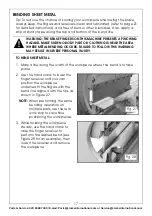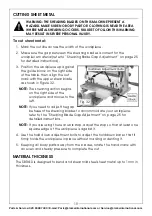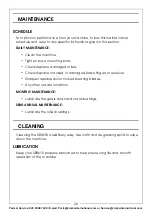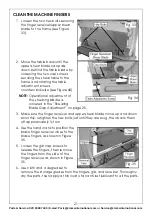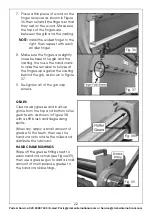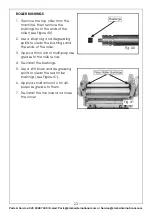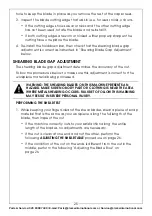
10
Parts & Service: 020 8988 7400 / E-mail: [email protected] or [email protected]
OPERATING - SLIP ROLLERS
SLIP ROLLER OVERVIEW
The slip roller is used to form cylinders,
cones, and arcs in sheet metal up to
1 mm in thickness and 610 mm wide,
as well as wires and rods. Three steel
rollers are configured to draw the
workpiece through a path that will
produce the desired results (see
Figures 10-11).
SLIP ROLLING TIPS
• Due to the many variables of different sheet metal types, no single
configuration of the rollers will create the same curve on all materials.
Rolling sheet metal to achieve an exact radius is a trial-and-error
process.
• Performing multiple passes through the machine with gradual
reductions in the curve radius produces better results than trying to
make the curve in one pass.
• To avoid pitted workpieces and damage to the roller surfaces, always
make sure the workpiece and the rollers are free of grit and any foreign
material before every use.
• Unless the operation requires a cone-type curve, always keep the rear
roller parallel to the front rollers by rotating the diameter adjustment
knobs the same amount.
CAUTION: THE ROLLERS OF THIS MACHINE PRESENT A PINCHING
HAZARD. MAKE SURE NO BODY PART OR CLOTHING IS NEAR THE
ROLLERS DURING OPERATION. FAILURE TO FOLLOW THIS WARNING MAY
RESULT IN FINGERS, HAIR, OR CLOTHING BEING PULLED INTO THE
MACHINE, CAUSING PERSONAL INJURY.
Fig. 10
Fig. 11
Summary of Contents for 6560005
Page 36: ......

















